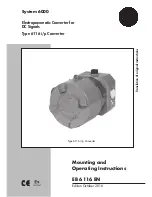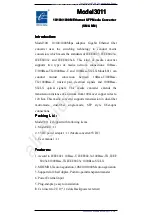
© 2010 Magnum Energy, Inc.
Neutral to Safety Ground Bonding
The NEC (National Electric Code)/CEC (Canadian Electrical Code)
provide the standards for safely wiring mobile (RV, boat, or truck)
installations. These wiring standards require the AC source (inverter,
shore power, or a generator) to have the neutral conductor tied to
ground. These standards also require that the AC neutral be con-
nected to safety ground (often called a “bond”) in only one place at
any time.
If more than one bond is established, currents can circulate
between neutral and ground and cause ground-loop currents. These
“ground-loops” can trip GFCIs and cause an electric shock hazard.
In mobile installations, there may be multiple AC sources (i.e., shore
power, generator, or inverter), which means there may be the poten-
tial of having multiple neutral to ground connections.
AC Wiring
This section describes the MMS Series’ required AC wire size and
overcurrent protection. It also provides information on how to make
the AC connections.
Info:
The
MMS1012-G model
has a power cord for
AC input and dual outlets on top of the inverter for AC
output, however, it has hardwiring capability as well.
WARNING
:
All wiring should be done by a quali
fi
ed
person or a licensed electrician following all local/NEC
codes.
Connect a short wire (same rating as the DC wires) to one end of the
fuse block and the other end of the short wire to the positive terminal
of the last battery string (see Figure 21). This is essential to ensure
even charging and discharging across the entire battery bank.
Ensure the DC wire connections (to batteries, inverter, and fuse lugs/DC
circuit breaker) are
fl
ush on the surface of the DC terminals, and the
hardware (lock washer and nut) used to hold these connections are
stacked correctly (see Figures 11 and 12).
Verify all DC connections are torqued from 10 to 12 foot-pounds.
Once the DC connections are completely wired and tested, coat the
terminals with an approved anti-oxidizing spray.
Press the red and black terminal covers onto the inverter’s DC con-
nectors to secure them in place.
If batteries are in an enclosure, perform a
fi
nal check of the hold
down brackets and all connections. Close and secure the battery
enclosure.
2.0 Installation
20
















































